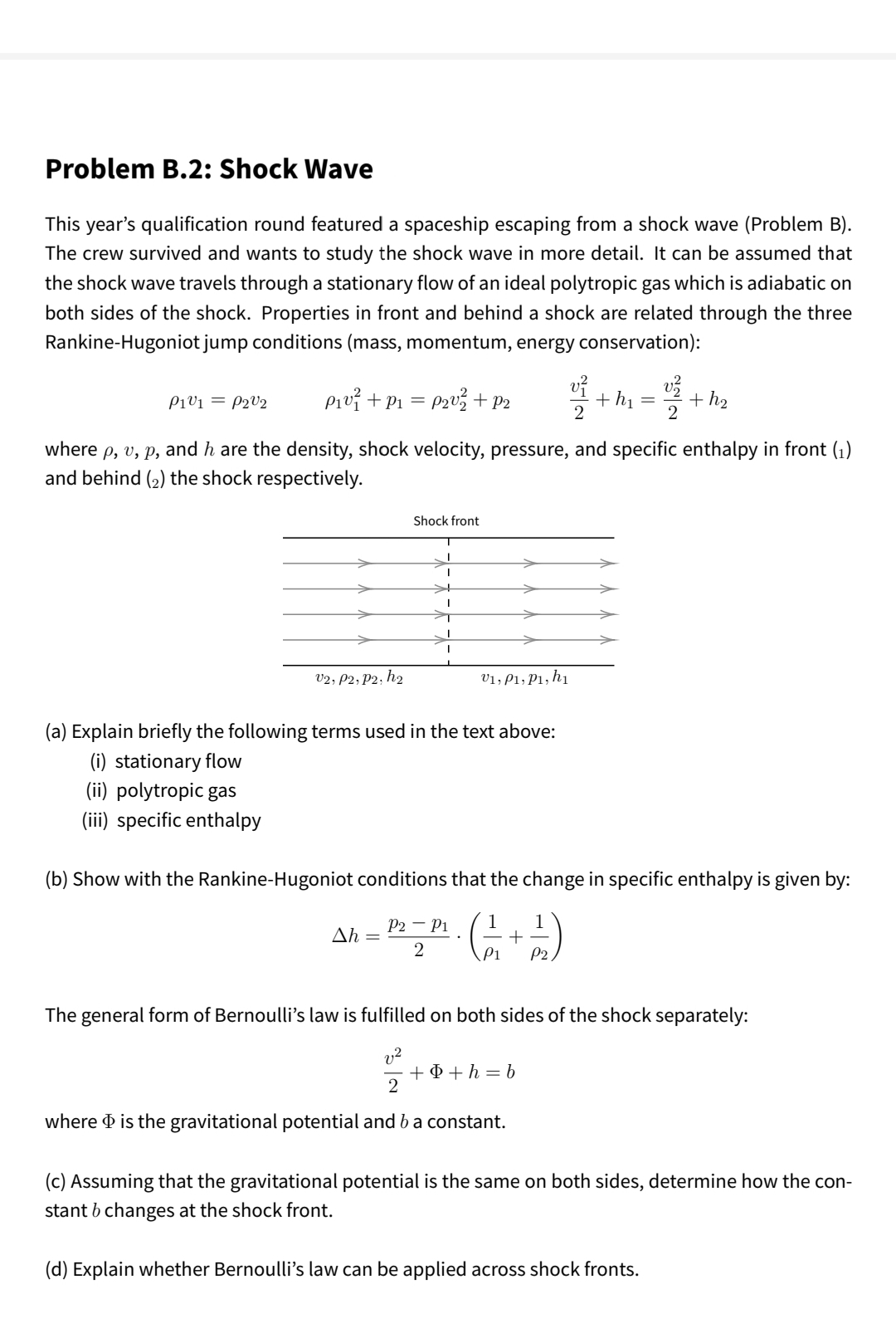(c) Assuming that the gravitational potential is the same on both sides, determine how the con- stant b changes at the shock front. (d) Explain whether Bernoulli's law can be applied across shock fronts.
(c) Assuming that the gravitational potential is the same on both sides, determine how the con- stant b changes at the shock front. (d) Explain whether Bernoulli's law can be applied across shock fronts.
Related questions
Question
Please Answer Question no. (c) and (d) only.

Transcribed Image Text:Problem B.2: Shock Wave
This year's qualification round featured a spaceship escaping from a shock wave (Problem B).
The crew survived and wants to study the shock wave in more detail. It can be assumed that
the shock wave travels through a stationary flow of an ideal polytropic gas which is adiabatic on
both sides of the shock. Properties in front and behind a shock are related through the three
Rankine-Hugoniot jump conditions (mass, momentum, energy conservation):
Pivž +P1 = P2v% +P2
+ hị
+ h2
Pivi = P2V2
2
2
where p, v, p, and h are the density, shock velocity, pressure, and specific enthalpy in front (1)
and behind (2) the shock respectively.
Shock front
v2, P2; P2; h2
V1, P1; P1, h1
(a) Explain briefly the following terms used in the text above:
(i) stationary flow
(ii) polytropic gas
(iii) specific enthalpy
(b) Show with the Rankine-Hugoniot conditions that the change in specific enthalpy is given by:
P2 – P1
Ah =
1
1
+ –
P1
P2
The general form of Bernoulli's law is fulfilled on both sides of the shock separately:
v2
+ D + h = b
2
where d is the gravitational potential and b a constant.
(c) Assuming that the gravitational potential is the same on both sides, determine how the con-
stant b changes at the shock front.
(d) Explain whether Bernoulli's law can be applied across shock fronts.
Expert Solution
This question has been solved!
Explore an expertly crafted, step-by-step solution for a thorough understanding of key concepts.
This is a popular solution!
Trending now
This is a popular solution!
Step by step
Solved in 3 steps
